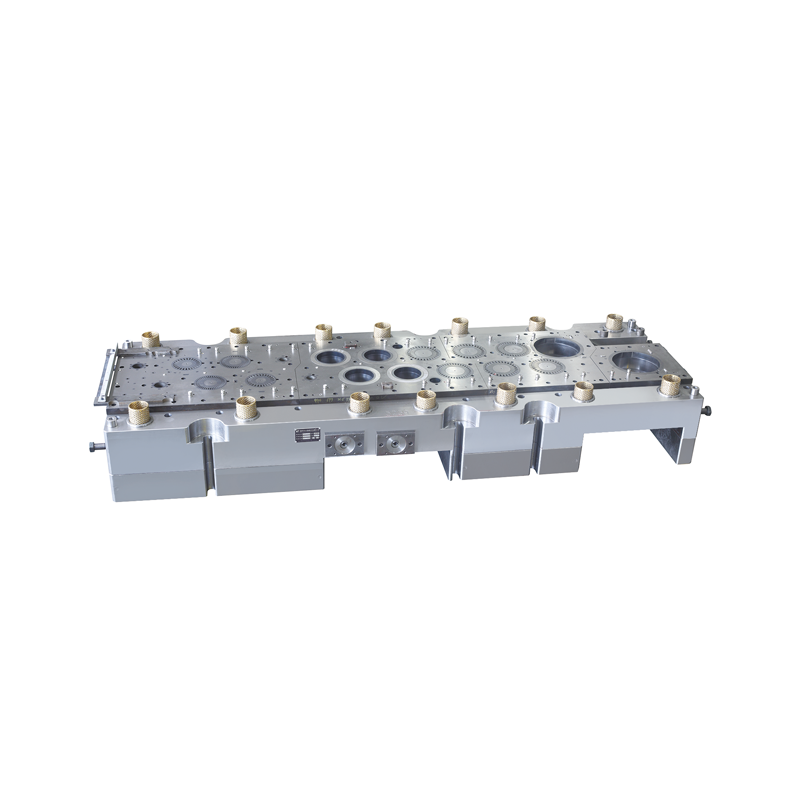 2025.06.06
2025.06.06
 Industry News
Industry News
In the competitive world of manufacturing, every inch of material matters. One of the effective strategies for improving production efficiency while reducing material waste lies in Stamping Die Design. When executed with innovation and precision, Stamping Die Design becomes a cornerstone for cost-effective and environmentally responsible production processes.
Understanding the Role of Stamping Die Design
At its core, Stamping Die Design refers to the planning and development of specialized tools used in the stamping process to shape, cut, or form metal sheets into specific parts. This process is fundamental in industries such as automotive, electronics, aerospace, and consumer goods. The efficiency of Stamping Die Design directly influences the quality of the final product, the speed of production, and importantly, the material yield.
Traditional stamping processes often resulted in considerable material waste, especially when the layout was not optimized. However, with advances in Stamping Die Design, engineers can now create dies that maximize the use of raw materials, strategically arrange components to reduce scrap, and support the use of recyclable materials. This not only lowers production costs but also aligns with sustainable manufacturing goals.
Material Utilization: A Key Metric of Effective Design
One of the primary goals of modern Stamping Die Design is to enhance material utilization. This involves the intelligent placement of parts within the material sheet, minimizing gaps and aligning components to reduce leftover material. Through computer-aided design (CAD) and simulation technologies, designers can visualize and calculate the nesting of parts before production begins.
By refining Stamping Die Design, manufacturers are able to cut down on excess material significantly. Even a 5% improvement in material usage can to substantial cost savings when applied at scale. For industries working with expensive alloys or specialty metals, the value of efficient Stamping Die Design becomes even more apparent.

Techniques That Improve Material Efficiency
There are several techniques within Stamping Die Design that contribute to improved material usage:
Progressive Die Design: This approach allows multiple operations to be performed in a single die setup. By doing so, it reduces the number of material transfers, improving yield and maintaining tighter tolerances.
Compound Die Design: Often used for complex parts, this method combines punching and blanking operations in one step, which optimizes space and minimizes waste.
Strip Layout Optimization: This involves carefully planning the layout of the part shapes on the strip of material to reduce unused areas. It's a critical part of Stamping Die Design that directly impacts scrap rates.
Pilot Hole and Notching Strategy: Strategic placement of holes and notches can also influence how efficiently a sheet is used. Effective Stamping Die Design takes these factors into account to prevent unnecessary removal of material.
Environmental and Economic Benefits
Beyond reducing material costs, improved Stamping Die Design contributes to broader environmental goals. Less waste means fewer resources are needed for production, and recycling becomes easier when scrap materials are minimized and more uniform. This helps manufacturers meet regulatory standards for sustainability and can improve their reputation among eco-conscious customers.
From an economic perspective, streamlined Stamping Die Design reduces not only raw material expenditure but also secondary costs such as waste disposal, energy usage, and downtime associated with tool changes or inefficiencies. In high-volume production settings, these savings can translate into improved margins and stronger competitiveness.
Collaboration Between Design and Manufacturing Teams
Achieving Stamping Die Design requires close collaboration between engineers, toolmakers, and production teams. Feedback from the shop floor can guide design improvements, while simulation software allows for testing different die configurations virtually before physical tooling begins. This loop of feedback and iteration s to smarter, more efficient Stamping Die Design processes.
Moreover, involving procurement and sustainability teams in the design phase can help identify material choices that balance cost, performance, and environmental impact, further reinforcing the benefits of a comprehensive approach to Stamping Die Design.
Future Trends in Stamping Die Design
As manufacturing technology continues to evolve, so too will Stamping Die Design. Integration of artificial intelligence and machine learning in design software is opening new doors for automated layout optimization. Additionally, additive manufacturing (3D printing) is starting to play a role in creating prototype dies, allowing for quicker testing and iteration.
Digitization of the production process also enables better data collection. Analyzing performance data from existing dies helps refine future Stamping Die Design choices, promoting a culture of continuous improvement.
Improving material utilization through thoughtful Stamping Die Design is not just a technical challenge—it's a strategic advantage. By minimizing waste, reducing costs, and supporting sustainability, manufacturers can position themselves for long-term success. Whether it's through optimized strip layouts, progressive dies, or new simulation tools, the path forward lies in intelligent and innovative Stamping Die Design. As industries continue to demand more efficient and eco-friendly solutions, those who prioritize effective Stamping Die Design will be well-equipped to the way.